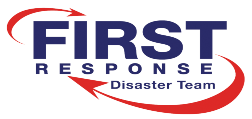What To Do After A Flood
Admin | Posted on |

Flooding can happen in a flash due to heavy rainfall or from a body of water. Flooding can happen unexpectedly from a burst pipe, plumbing fixture or appliance malfunction. However it happens, flooding can quickly cause massive water damage in a home or property. As swiftly as it can occur, flood damage remediation needs to be taken care of swiftly as well.
Step #1: Cleaning Up After A Flood
Contaminants in Water
It’s good to be cautious when it comes to any flood water. It can be contaminated and unclean. When it comes to groundwater intrusion (meaning any flood water that flows from the ground/outdoors into your home or building), then it should be assumed it’s far worse than unclean. Groundwater can be downright hazardous.
There are unseen dangers lurking in groundwater, or areas that were contaminated by receding groundwater. While you may think groundwater is from a fairly clean source, any water can pick up and carry contaminants into your space. Groundwater can contain raw sewage, bacteria, chemicals such as oil or gasoline, and other toxins. Flood water could also contain dangerous materials such as debris and sharp objects. When dealing with groundwater, our team will wear proper gear, including gloves, boots, and potentially more PPE depending on the situation.
Electrocution
No matter the source of the flood water, we all know water and power don’t play well. During any flood, there can be a risk of electrocution. Whether your neighborhood has power or not, you or a certified electrician should manually turn off the power. You should not set foot back inside your property until you’re sure the power is off.
Other Hazards
Wet surfaces and standing water can lead to serious falls. Also, during serious flash floods, there can be a risk of gas leaks and structural damage. Here are the consequences of untreated water damage.
Step #2: Call a Professional Restoration Company
It’s important to begin drying out your property soon to prevent mold growth. Call for backup and let the dry out and clean up commence, by the professionals! The First Response Disaster Team is trained, has the proper equipment, certifications, and knowledge to handle flood damage clean up and water mitigation. Our team will assess the flood damage and begin to dry out the property. Wet materials and standing water are a recipe for more water damage, mold growth, and mold damage. Wet materials may need to be removed. Your insurance company will agree that you should begin the process of drying out your property to avoid further damage and mold growth. While waiting for us, you can check here some water damage prevention tips.
Step #3: Call Your Insurance Company
Call your insurance agent or your insurance company hotline to report the flood and begin the process to file a claim. Check here what flood insurance covers. A burst pipe or a malfunction of an appliance may be covered by your insurance. Unfortunately groundwater intrusion may not be covered, unless you have a separate flood insurance policy. It’s still important to notify your agent and begin the claim process.
Step #4: Document the Damage
You may want to begin going through your items and throwing things out, however it’s best to document items first by taking photos and videos of the damage. You’ll want to claim damaged items. The insurance company may ask for proof of damage. We will be able to provide proper documentation of the property to your insurance adjuster during the restoration process.
Step #5: Peace of Mind
Sit back and know that the professionals are handling your dry out and clean up. Your restoration company will regularly monitor and document the drying progress. They’ll clean up and disinfect as needed. If you’ve filed a claim, your restoration company will work with your insurance adjuster throughout the process. As your water and flood damage restoration contractor, our goal is to get your property restored and flood damage remedied as smoothly and quickly as possible.
Flooded? Don’t Stress—First Response Disaster Team Has You Covered. Get Back to Normal Fast—Contact Us Now for Expert Help!

